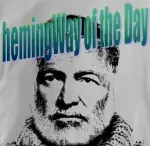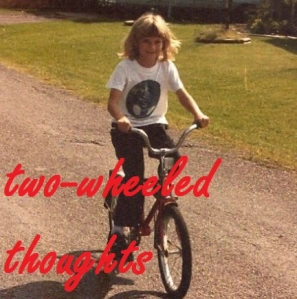I was keyed up for the release of When They See Us as a Netflix original miniseries at the beginning of June. (I’m treating it here as a movie, especially because “limited series” seems like such a downplay for a serious work of art and social commentary.) I viewed the four episodes in three evenings, rushing through, feeling both addicted and horrified, unable to look away. I thought I was prepared for the subject matter, but I was shocked beyond expectations.
 The show handles events from 1989, when five boys (four Black, one Puerto Rican and Black) were arrested for the brutal rape and beating of a white woman jogging in Central Park. Their names are Raymond Santana, Yusef Salaam, Kevin Richardson, Antron McCray, and Korey Wise. Although there was no evidence linking them to the crime, and although their confessions were full of holes and inconsistencies and signs of police coercion, they were found guilty. The four younger boys, ages fourteen to fifteen, were sentenced to between five and ten years. Korey Wise was sixteen, and received ten to fifteen, entering adult prison directly. In 2002, another man in prison for a series of rapes, Matias Reyes, confessed to the crime, and Korey (still incarcerated) was released, and all five men’s convictions were vacated.
The show handles events from 1989, when five boys (four Black, one Puerto Rican and Black) were arrested for the brutal rape and beating of a white woman jogging in Central Park. Their names are Raymond Santana, Yusef Salaam, Kevin Richardson, Antron McCray, and Korey Wise. Although there was no evidence linking them to the crime, and although their confessions were full of holes and inconsistencies and signs of police coercion, they were found guilty. The four younger boys, ages fourteen to fifteen, were sentenced to between five and ten years. Korey Wise was sixteen, and received ten to fifteen, entering adult prison directly. In 2002, another man in prison for a series of rapes, Matias Reyes, confessed to the crime, and Korey (still incarcerated) was released, and all five men’s convictions were vacated.
It’s a terribly painful story to see unfold. On the April night in 1989, we see a large group of boys running through Central Park and acting out. They push at and harass bicyclists. They beat up a man. It’s easy to see how things escalate: boys roughhousing, and then some of them take it a step too far; imagine yourself one of those boys. You’re not responsible for the actions of those you’re with; you don’t even know all of them. It turns out that the jogger was raped in the same park on the same night, beaten within an inch of her life. Three of the boys who would become known as the Central Park Five were arrested that night. The next day, police came looking for Yusef Salaam. His friend Korey was with him when they take him in, and agreed to come along, just for moral support. In an ugly-ironic twist, Korey would serve the longest sentence for this crime in which none of the Five had any involvement.
It’s unsurprising that When They See Us knocks it out of the park with Ava DuVernay as creator, co-writer and director. Under her guidance, we see the boys running through Central Park. We see them picked up by police, and interrogated without parents present for hours and hours, without bathroom breaks or food; we see them pushed around, threatened, and coached through their false confessions. We see them in court and then in prison; we see them get out and hug their families and try to put their lives back together. We see Reyes confess to the rape. I am deeply impressed by the acting performances given by both the young actors (portraying the teenaged boys) and adults. I am horrified, over and over again.
I’m glad (well, that’s a weird word) to see the story of Korey Wise’s sister given air time, too: Marci was a trans woman murdered while he was incarcerated, who we meet only through flashbacks, as he weathers solitary confinement by living in a dream world largely starring this much-loved older sister. The story of a murdered Black trans woman is unfortunately common still today, and Marci deserved this coverage. She is beautifully played by Isis King.
I was also intrigued to meet the very sympathetic (in both senses) character of Roberts, a white prison guard who goes out of his way to be kind and generous to Korey, even holding him in an embrace when he finds out about Marci’s death. Roberts does not appear to come from real life (go figure). He was a sweet departure, but his totally fiction existence feels like a final driving-home of the horror of this true story.
I find the title interesting, too. I can think of several ways to follow this phrase, from ‘when they see us, they only see one thing/they think they know us,’ to ‘when they see us, then, finally, we’ll get justice,’ in the sense that we mean when we say it feels good to be seen. The story is so clearly about racism, about the way in which these boys, these children, were handled as proxy for everything that the world feared about Black men in 1980s New York. A white woman was raped, and they came for the Central Park Five just like they came for Emmett Till. And they were just babies: that’s one of the advantages of seeing and not just reading about this story, seeing the faces of these boys and realizing how very young they were.
I think this was everything it needed to be. As a crime drama, it’s gripping and moving. As social commentary, it’s thorough in its criticisms: the cops and prosecutors demonize themselves through their actions. I wept more than once. It’s also a visually impressive piece of art – this is where I’d normally call it visually pleasing, but of course that’s the wrong adjective – it’s full of expressive images, from the wide-angle view of boys in the park to the interrogation rooms and prison cells, and expansiveness of the outdoors to a man freed. I am still recovering emotionally from this story. Well done, DuVernay and full cast.
 After feeling so affected by this show, I went looking for more, which led me to the documentary covering the same events from seven years earlier. The Central Park Five did much of the same job as the Netflix series, but with original footage and the perspectives of the men looking back from years later. Necessarily, it offered a less complete view of past events, because it stuck to the footage available; we don’t see police hit or threaten or coach the boys’ confessions, obviously, but we see the taped confessions, and we see the faces of the five boys and, later, men themselves. (Antron McCray allowed the use of his voice and not his image, as an adult.)
After feeling so affected by this show, I went looking for more, which led me to the documentary covering the same events from seven years earlier. The Central Park Five did much of the same job as the Netflix series, but with original footage and the perspectives of the men looking back from years later. Necessarily, it offered a less complete view of past events, because it stuck to the footage available; we don’t see police hit or threaten or coach the boys’ confessions, obviously, but we see the taped confessions, and we see the faces of the five boys and, later, men themselves. (Antron McCray allowed the use of his voice and not his image, as an adult.)
There was not much more of the story to be gained here, then, but an advantage in seeing it come from the people actually involved. I appreciated seeing what each character looked like, in comparison to the actor(s) who played them. I enjoyed seeing period footage of New York in general, too. I think it’s probably a good documentary, but it suffers some by comparison to When They See Us, which has the obvious advantage of being able to show more – whatever DuVernay wants to depict – and more dramatically. Having the two together feels like the right final call, of course, for the viewer wanting to explore this subject matter. I’m very impressed with both.
As a final remark, I want to say that I have a friend who has come into personal contact with Linda Fairstein, the evil, racist prosecutor in this story. This friend had her own horrible experience, which upholds what we learn about Fairstein here. Friend, I am sorry again for what happened to you. We’re decades late, but I’m glad everybody’s now talking about her and holding her responsible for some of her actions. Fairstein has enjoyed a career as a crime novelist until just recently: following a social media campaign, her publisher, Dutton, a Penguin Random House imprint, has ended the relationship. Small progress.
Rating: an average 8.5 years for these two fine films.
Filed under: musings | Tagged: documentaries, historical fiction, history, movies, race | Leave a comment »

















